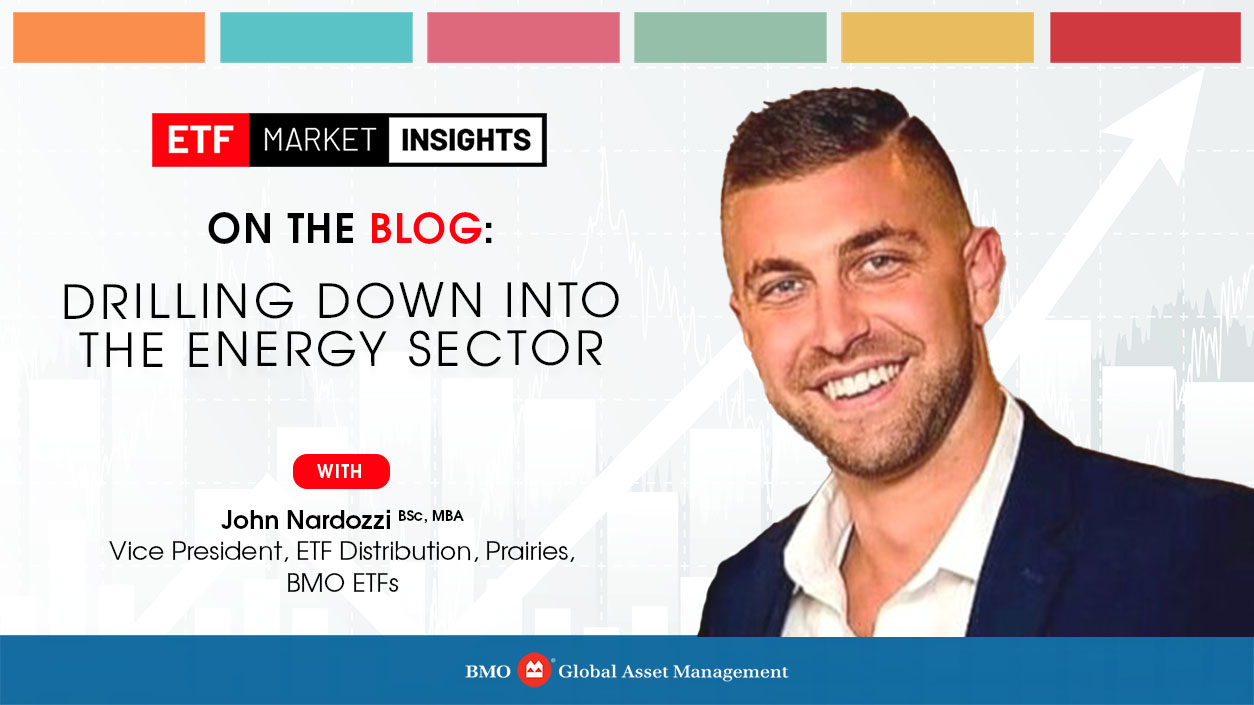
A look at the Energy Sector
It has been a turbulent few years for the energy sector and more specifically, oil & gas, with US crude trading with a negative price tag during the throes of the COVID-19 pandemic and trading north of $120 US/bbl (West Texas Intermediate or WTI) during the energy sector euphoria of 20221. The energy sector has also become somewhat quite polarizing in recent years given the gradual transition away from traditional fossil fuels and what this means for traditional oil and gas.
Recently we saw oil dip down to the low $70s/bbl on the back of the OPEC+ (Organization of the Petroleum Exporting Countries) news that they were not going to indefinitely extend their production cuts, and we have since seen a bounce back off that level – with WTI currently hovering right around $81/bbl.
As of market close on June 21, 2024, on a year-to-date (YTD) and 1 year basis, the energy sectors both North and South of the border have fared well; with the US energy sector up 6.2% and 13.3% respectively, and the Canadian energy sector up 8.8% and 18.7% respectively.
The Canadian energy sector is the second-largest sector in the TSX after financials. Currently, the energy sector accounts for close to 20% of the S&P/TSX 60 Index by market capitalization, it is a huge part of the Canadian economy.
Where do we go from here?
There are reasons to be bullish on the energy sector. It is fairly unlikely that we see that $100+/bbl level again in the near term, but given the US is currently in the later cycle of the business cycle where energy has historically performed well, a $90/bbl level is a realistic outcome. 2022 and 2023 can be viewed as being mid-cycle, meaning that this was the period where the central bank was raising rates, the economy acclimates to the higher rates and higher energy prices, and the sector and commodities tend to perform well during the late business cycle phase.
Demand vs. Supply
Travel is a key driver of demand, and we are entering the season where air and ground travel picks up. There was some weakness in demand during the winter months when warmer weather created a decrease in the demand for oil, but even given the weaker start, we’re tracking around 1.3 million barrels of oil demand growth per day which is above trend.
We’re starting to see CapEx that is being driven by the transition to green energy and to some extent, defense spending, and you’re seeing it across commodities broadly. This CapEx cycle is stimulative for metals, yes, but it is also great for energy demand. While some investors are concerned about long-term demand given the transition to sustainable energy, oil has continued to surprise to the upside.
On the supply side, the spare capacity of oil production is isolated to a few countries; namely Saudi Arabia and the UAE. The surprises in US production that occurred last year have not been repeated this year, and if we look at the non-OPEC+ production increases from Guyana and Brazil, this is just from CapEx spend that goes back several years (about a decade) and there has been no new pipelines or new investment since. Looking out to the next few years, many argue that the oil supply continues to tighten.
Experts continue to tout that US natural gas prices are headed much higher in the years to come. An arbitrage becomes efficient where the export of natural gas from the United States allows the American and European natural gas prices to balance each other out. It is important to keep in mind that China, India, and Indonesia continue to increase their coal production which is the equivalent of over 7 million barrels per day. This is part of the reason why in 2023 gas prices went negative in Europe and we saw gas prices in the US dip as well.
Other considerations
The Canadian energy sector is impacted by many other variables as well. Inflation is an important factor, as inflation rises, that should also help the energy sector which we have seen recently. Conflicts around the world are another potential tailwind, with impacts to supply and demand. Legislation and political agendas are another important influencer as we say with the recent U.S. Inflation Reduction Act which was a catalyst for renewable energy projects.
There is a lot to think about in the Energy sector – namely in oil and gas – but the overall near-term story of supply vs. demand remains supportive as we continue throughout the summer months and geo-political events continue around the world. This, coupled with the supply-side announcements from OPEC+ which indicate the cartel’s production cuts of ~3.6 million bpd until the end of 2025 and ~2.2 million bpd until the end of September 2024, should provide an additional driver for the sector.
Ways an investor can gain exposure to the energy sector in Canada and the US:
First, BMO’s Equal Weight Oil & Gas ETF (Ticker: ZEO)2 is an ETF that is designed for investors who are looking for growth solutions in their portfolio. This solution has an equal-weight exposure to Canadian oil & gas stocks, allowing for lessened security-specific risk.
For those looking for additional cash-flow from their energy exposure another solution is BMO’s Covered Call Energy ETF (Ticker: ZWEN)3 has been designed to provide exposure to a portfolio of energy, and energy related companies while earning call option premiums and generating additional cash flow. The call options are written out of the money and selected based on analyzing the option’s implied volatility.
1 https://oilprice.com/oil-price-charts/
2 ZEO Annualized distribution Yield of 3.98% as of June 30, 2024. Annualized Performance NAV of 1Y -24.67%, 2Y -13.07%, 3Y -23.26%, 5Y – 16.20, 10Y – 0.60% and Since Inception 1.69%.
3 ZWEN Annualized distribution Yield of 8.88% as of June 30, 2024. Annualized Performance NAV of 1Y -21.33% and Since Inception 8.46%.
Annualized distribution yield definition: This yield is calculated by taking the most recent regular distribution, or expected distribution, (excluding additional year end distributions) annualized for frequency, divided by current NAV. The yield calculation does not include reinvested distributions.
Disclaimers:
The communication is for information purposes. The information contained herein is not, and should not be construed as, investment, tax or legal advice to any party. Particular investments and/or trading strategies should be evaluated relative to the individual’s investment objectives and professional advice should be obtained with respect to any circumstance.
Any statement that necessarily depends on future events may be a forward-looking statement. Forward-looking statements are not guarantees of performance. They involve risks, uncertainties and assumptions. Although such statements are based on assumptions that are believed to be reasonable, there can be no assurance that actual results will not differ materially from expectations. Investors are cautioned not to rely unduly on any forward-looking statements. In connection with any forward-looking statements, investors should carefully consider the areas of risk described in the most recent prospectus.
Distribution yields are calculated by using the most recent regular distribution, or expected distribution, (which may be based on income, dividends, return of capital, and option premiums, as applicable) and excluding additional year end distributions, and special reinvested distributions annualized for frequency, divided by month end net asset value (NAV). The yield calculation does not include reinvested distributions. Distributions are not guaranteed, may fluctuate and are subject to change and/or elimination. Distribution rates may change without notice (up or down) depending on market conditions and NAV fluctuations. The payment of distributions should not be confused with the BMO ETF’s performance, rate of return or yield. If distributions paid by a BMO ETF are greater than the performance of the investment fund, your original investment will shrink. Distributions paid as a result of capital gains realized by a BMO ETF, and income and dividends earned by a BMO ETF, are taxable in your hands in the year they are paid. Your adjusted cost base will be reduced by the amount of any returns of capital. If your adjusted cost base goes below zero, you will have to pay capital gains tax on the amount below zero.
Cash distributions, if any, on units of a BMO ETF (other than accumulating units or units subject to a distribution reinvestment plan) are expected to be paid primarily out of dividends or distributions, and other income or gains, received by the BMO ETF less the expenses of the BMO ETF, but may also consist of non-taxable amounts including returns of capital, which may be paid in the manager’s sole discretion. To the extent that the expenses of a BMO ETF exceed the income generated by such BMO ETF in any given month, quarter, or year, as the case may be, it is not expected that a monthly, quarterly, or annual distribution will be paid. Distributions, if any, in respect of the accumulating units of BMO Short Corporate Bond Index ETF, BMO Short Federal Bond Index ETF, BMO Short Provincial Bond Index ETF, BMO Ultra Short-Term Bond ETF and BMO Ultra Short-Term US Bond ETF will be automatically reinvested in additional accumulating units of the applicable BMO ETF. Following each distribution, the number of accumulating units of the applicable BMO ETF will be immediately consolidated so that the number of outstanding accumulating units of the applicable BMO ETF will be the same as the number of outstanding accumulating units before the distribution. Non-resident unitholders may have the number of securities reduced due to withholding tax. Certain BMO ETFs have adopted a distribution reinvestment plan, which provides that a unitholder may elect to automatically reinvest all cash distributions paid on units held by that unitholder in additional units of the applicable BMO ETF in accordance with the terms of the distribution reinvestment plan. For further information, see the distribution policy in the BMO ETFs’ prospectus.
Commissions, management fees and expenses all may be associated with investments in exchange traded funds. Please read the ETF Facts or prospectus of the BMO ETFs before investing. The indicated rates of return are the historical annual compounded total returns including changes in unit value and reinvestment of all dividends or distributions and do not take into account sales, redemption, distribution or optional charges or income taxes payable by any unitholder that would have reduced returns. Exchange traded funds are not guaranteed, their values change frequently and past performance may not be repeated.
For a summary of the risks of an investment in the BMO ETFs, please see the specific risks set out in the BMO ETF’s prospectus. BMO ETFs trade like stocks, fluctuate in market value and may trade at a discount to their net asset value, which may increase the risk of loss. Distributions are not guaranteed and are subject to change and/or elimination.
BMO ETFs are managed by BMO Asset Management Inc., which is an investment fund manager and a portfolio manager, and a separate legal entity from Bank of Montreal.
BMO Global Asset Management is a brand name under which BMO Asset Management Inc. and BMO Investments Inc. operate.
“BMO (M-bar roundel symbol)” is a registered trademark of Bank of Montreal, used under licence.
This communication may contain links to other sites that BMO Global Asset Management does not own or operate.



















































